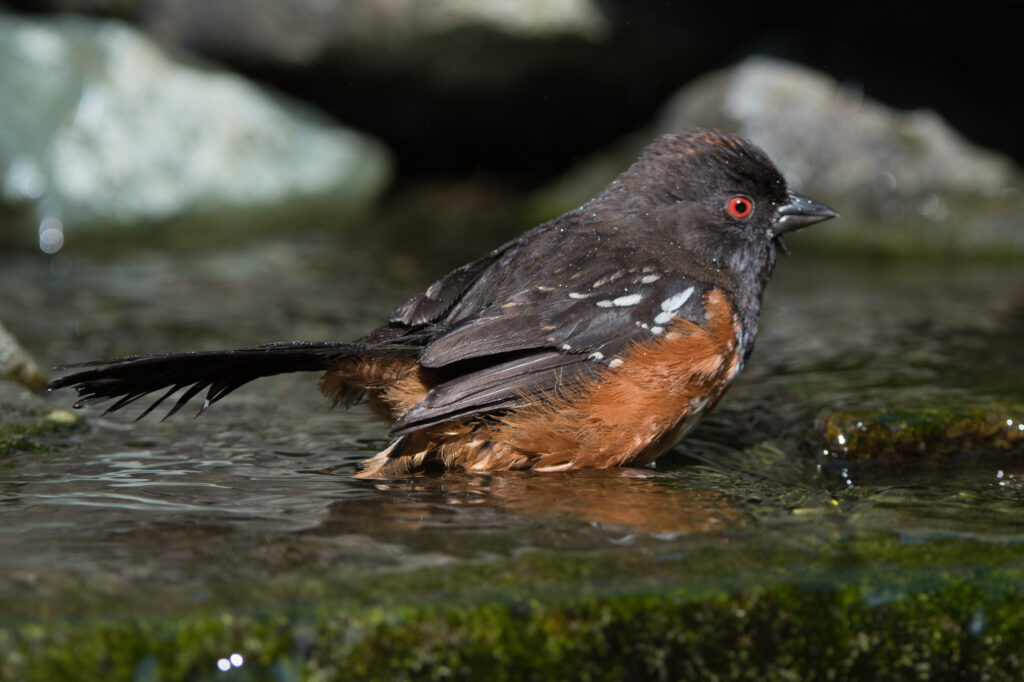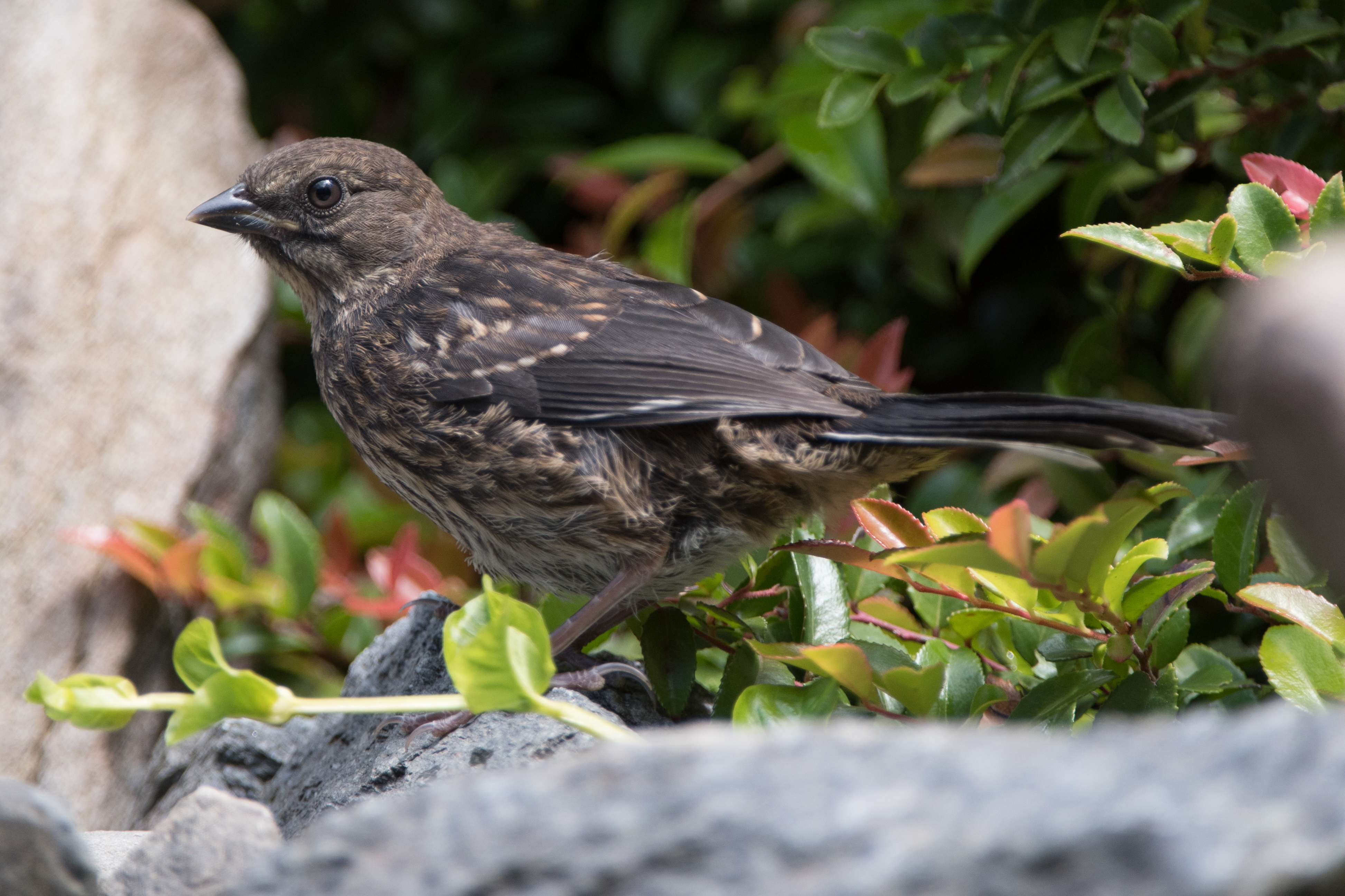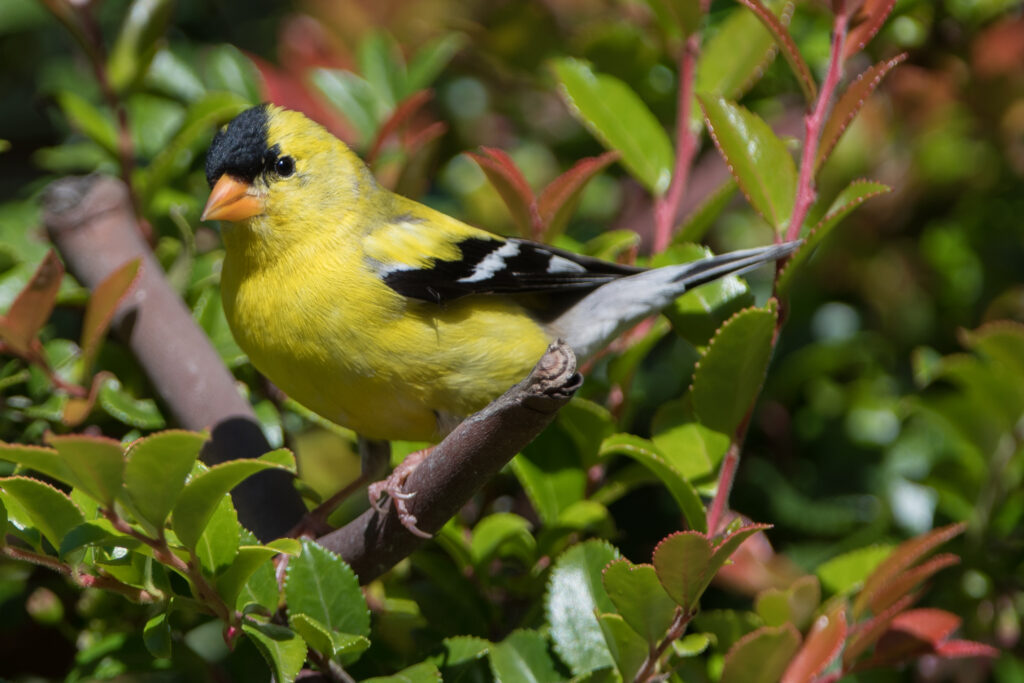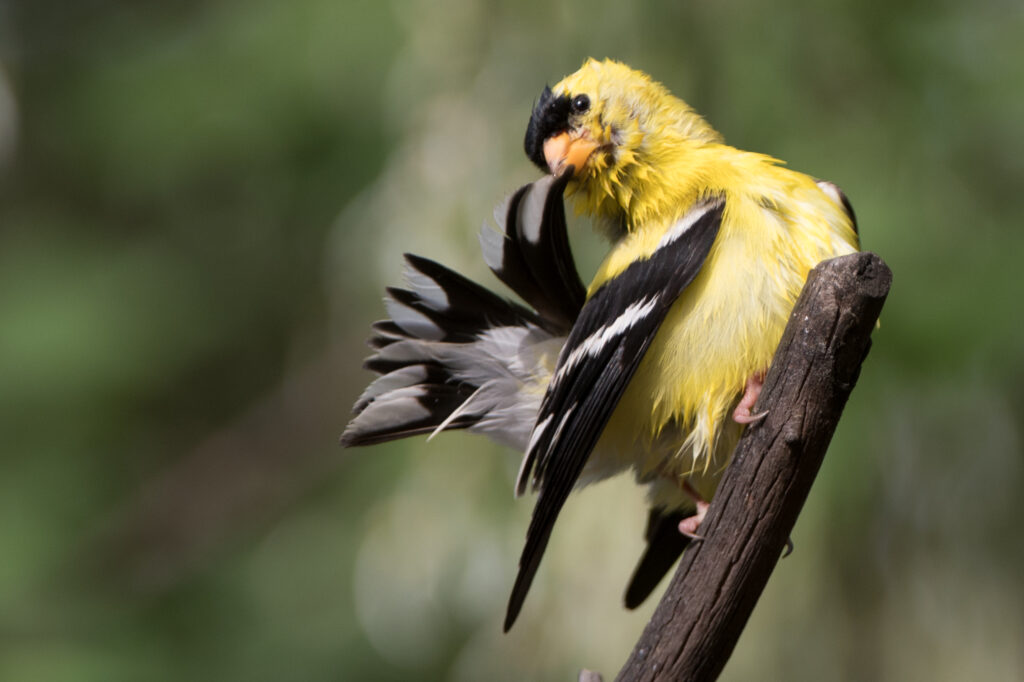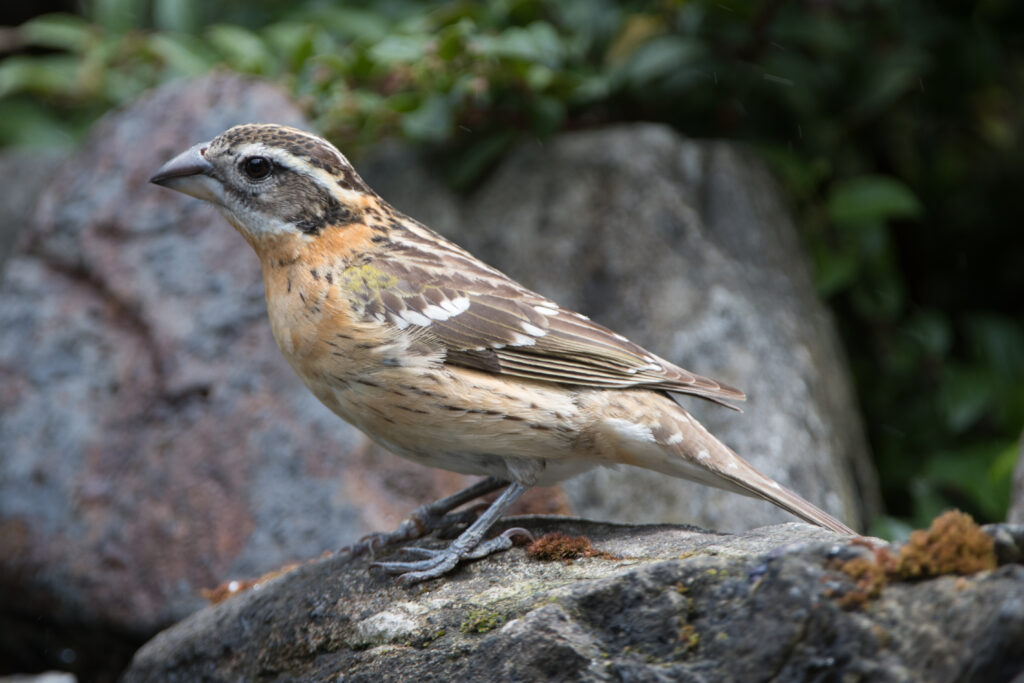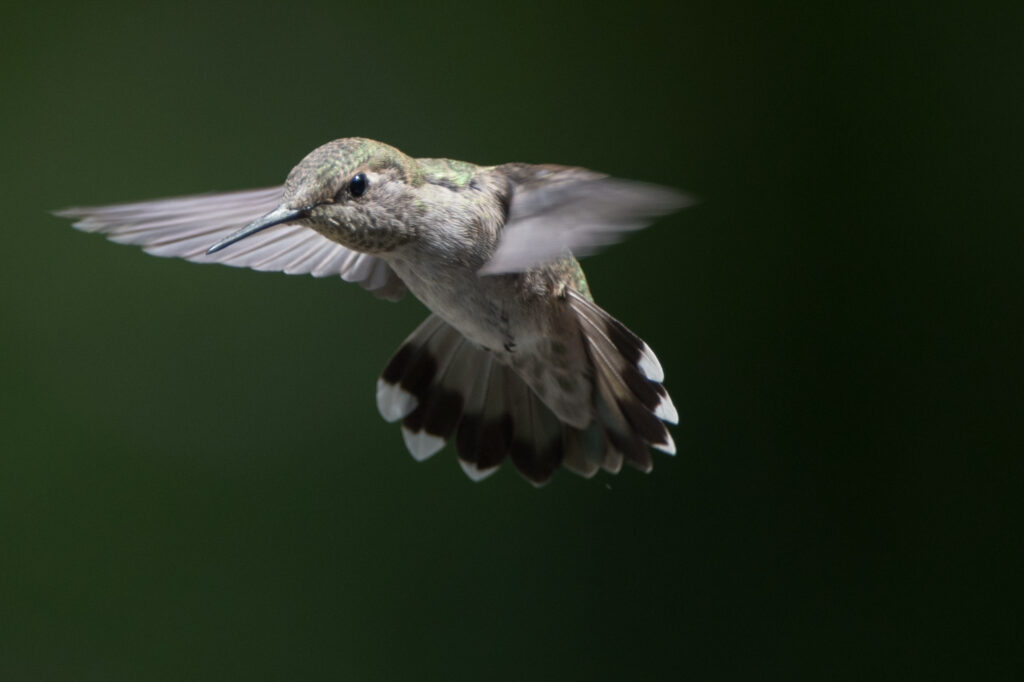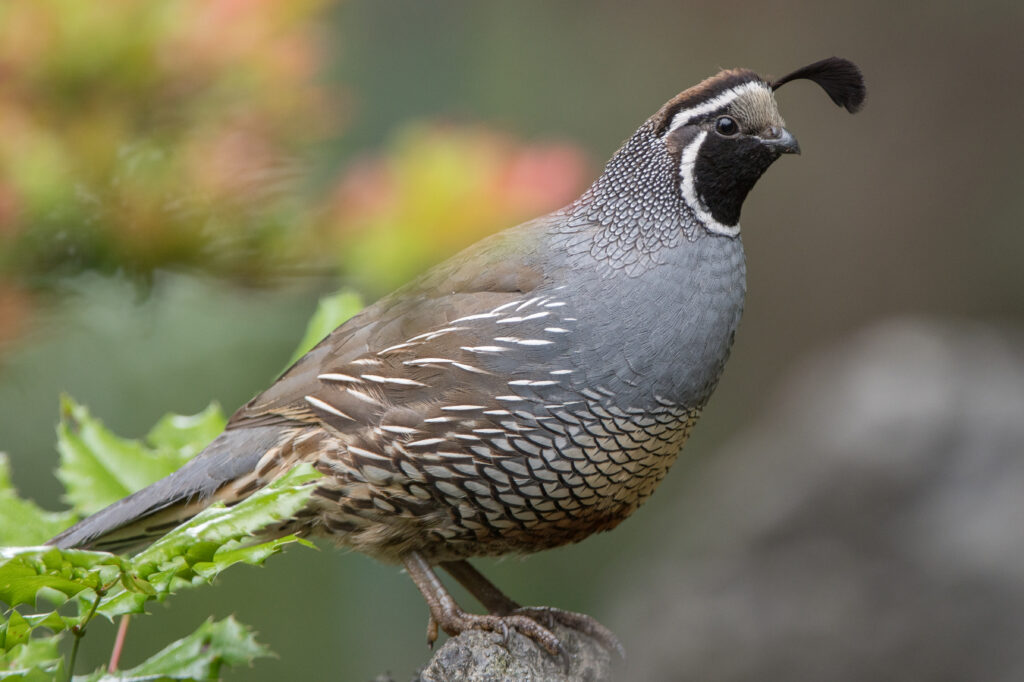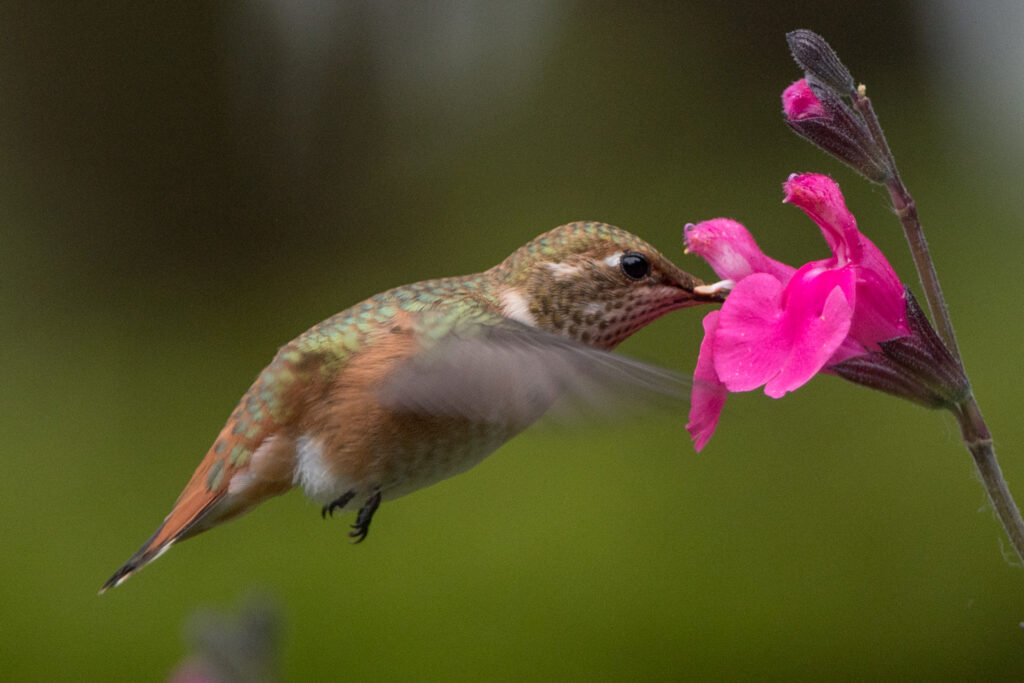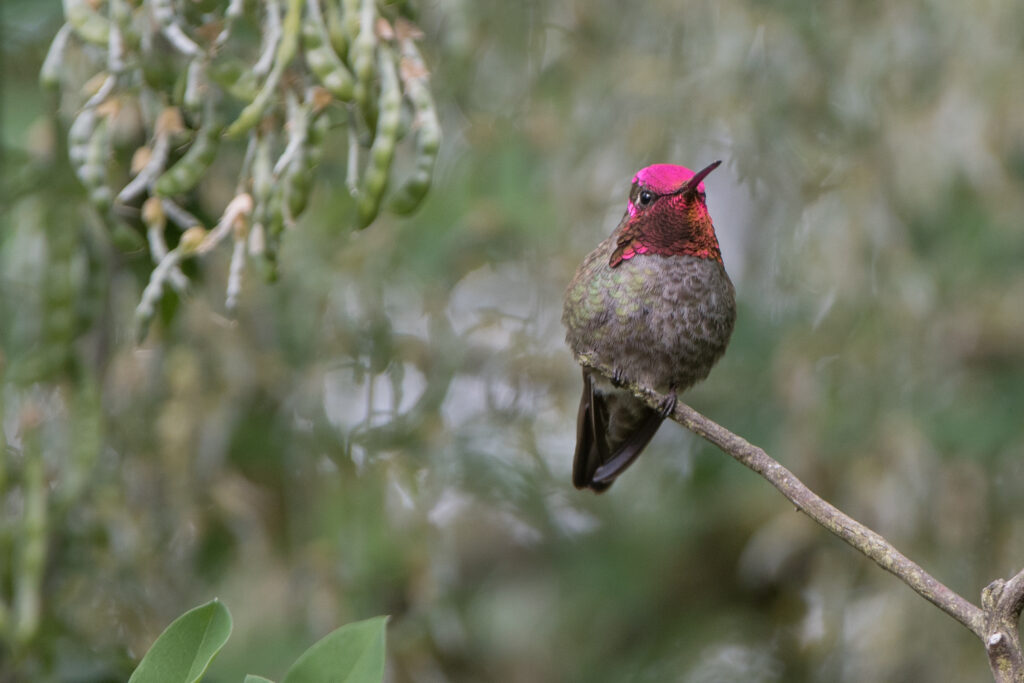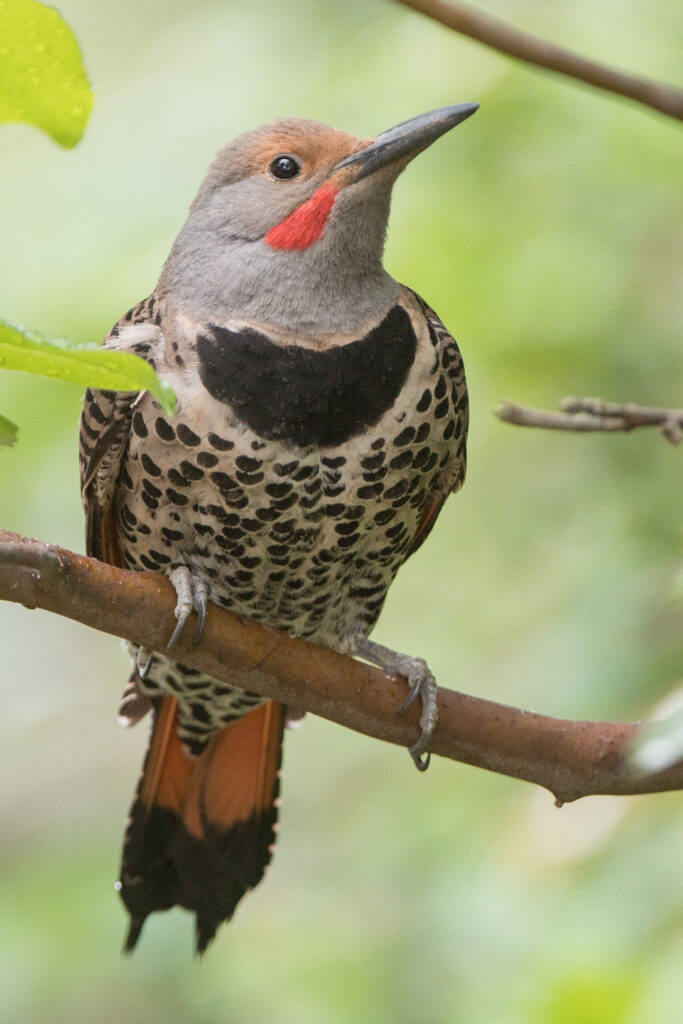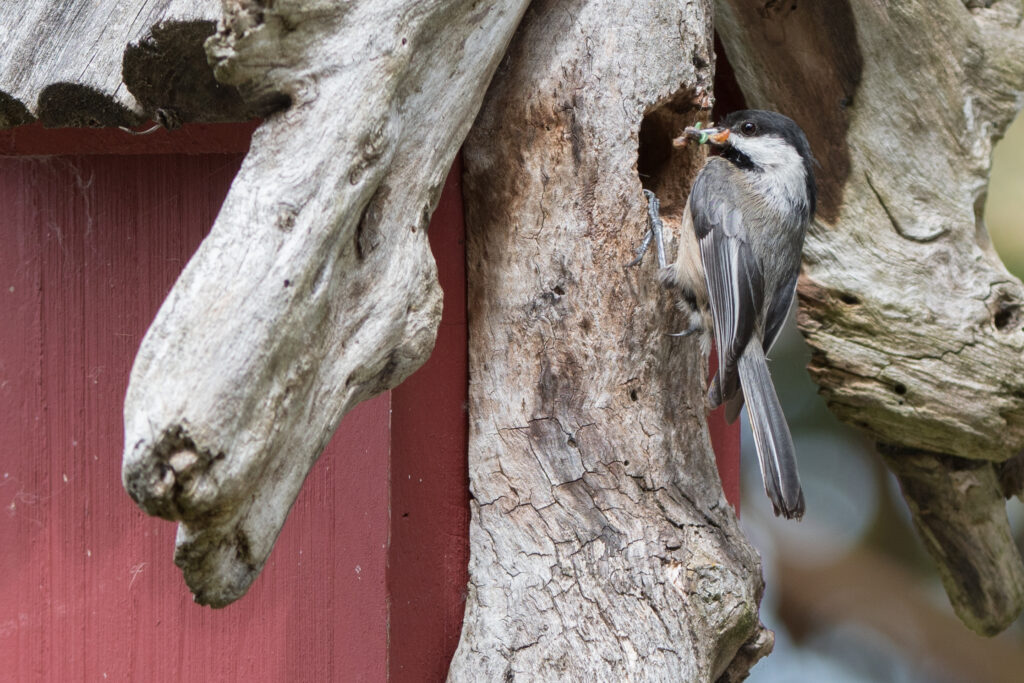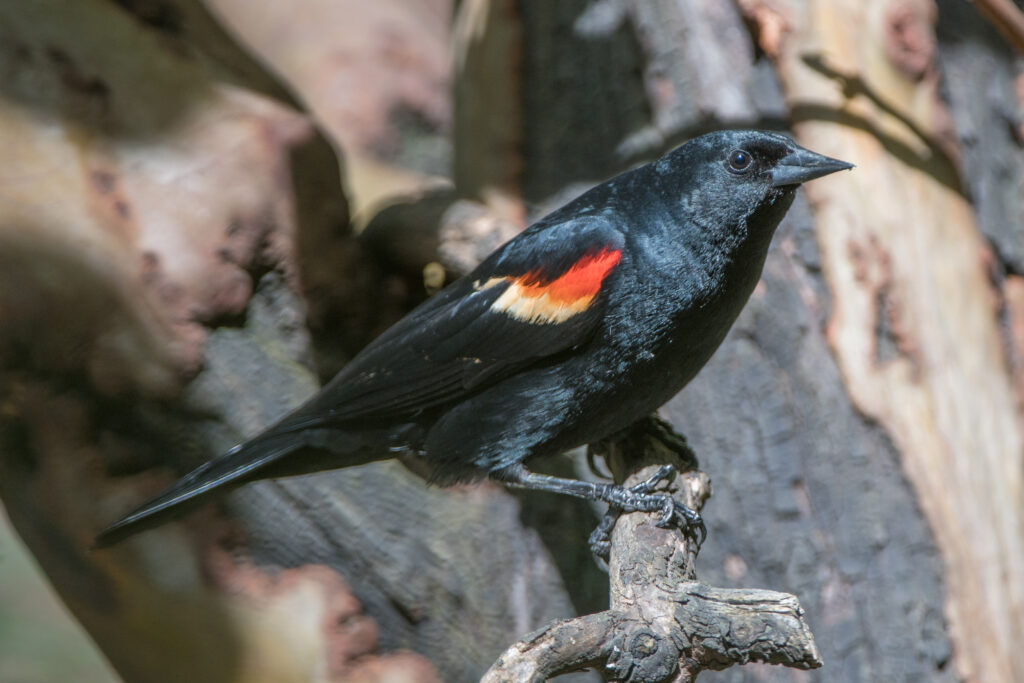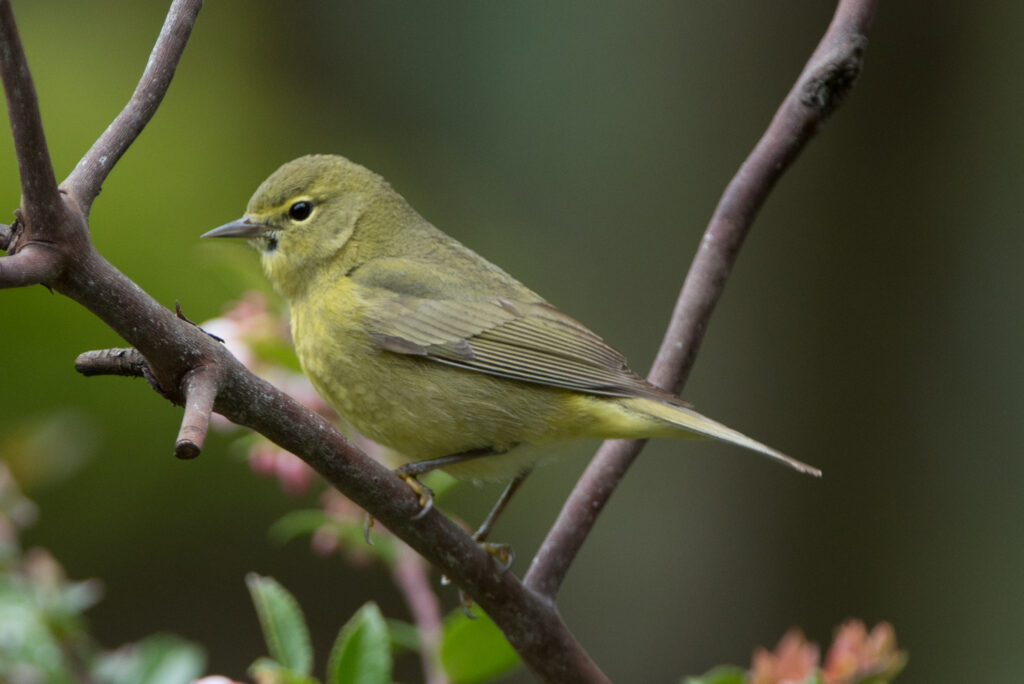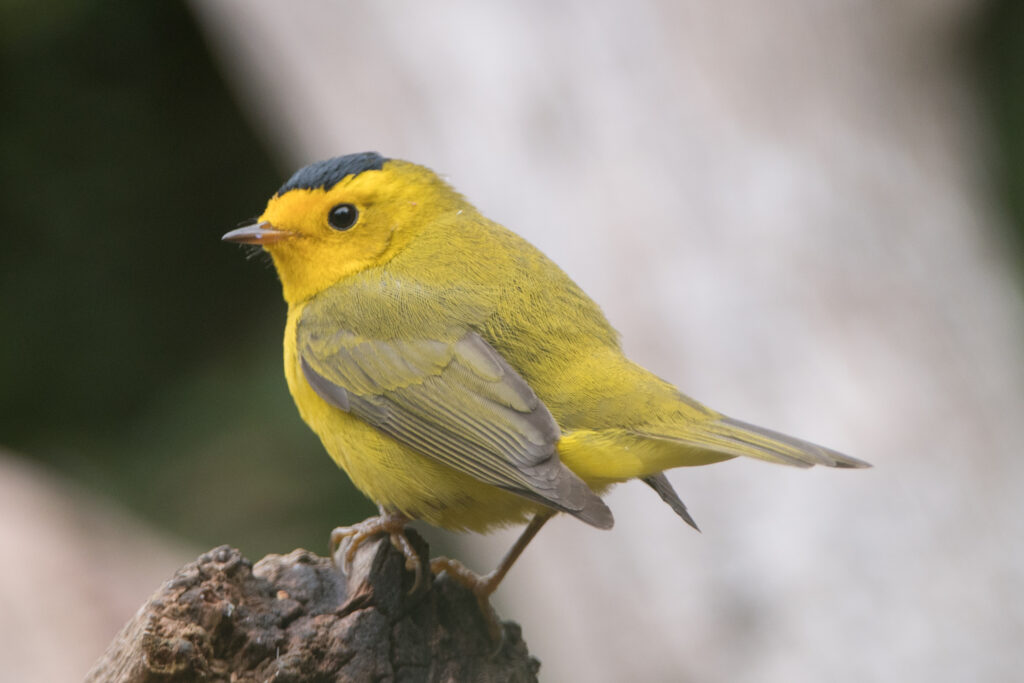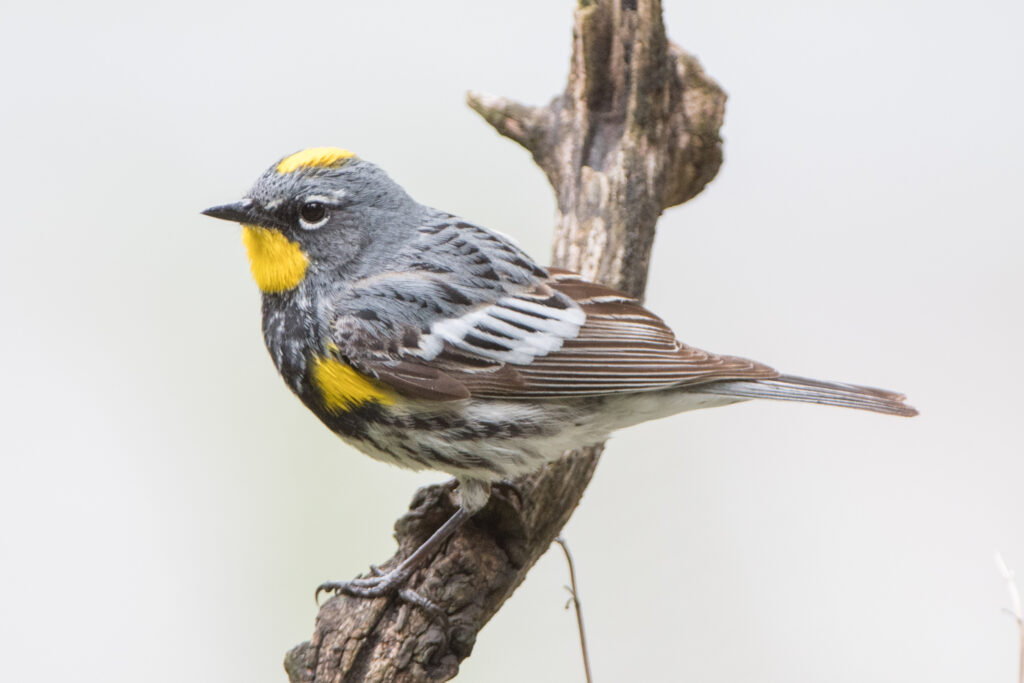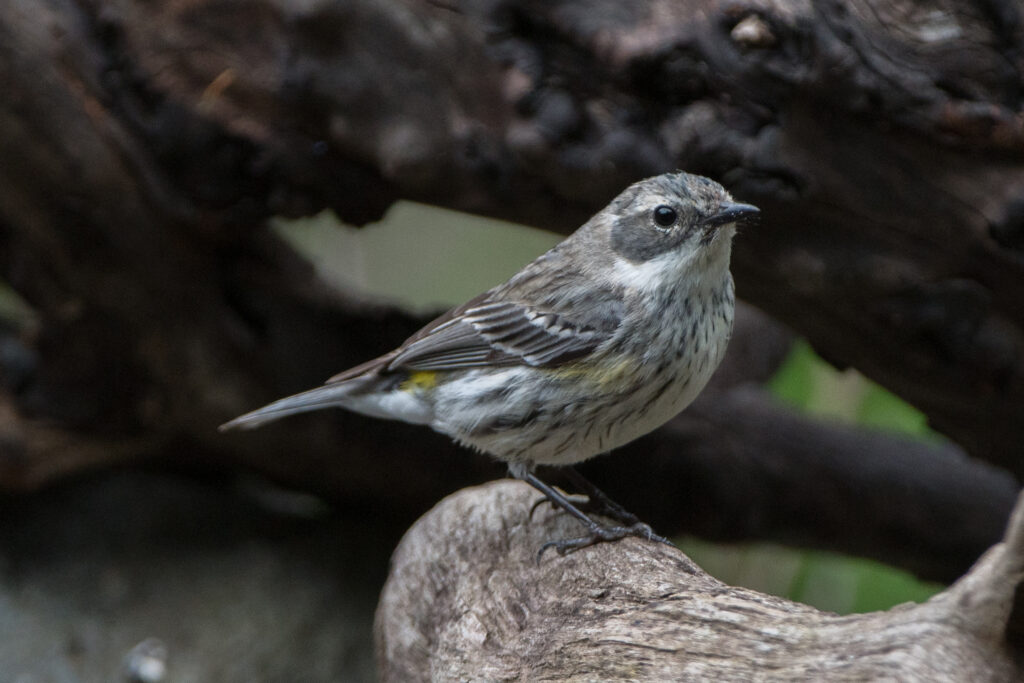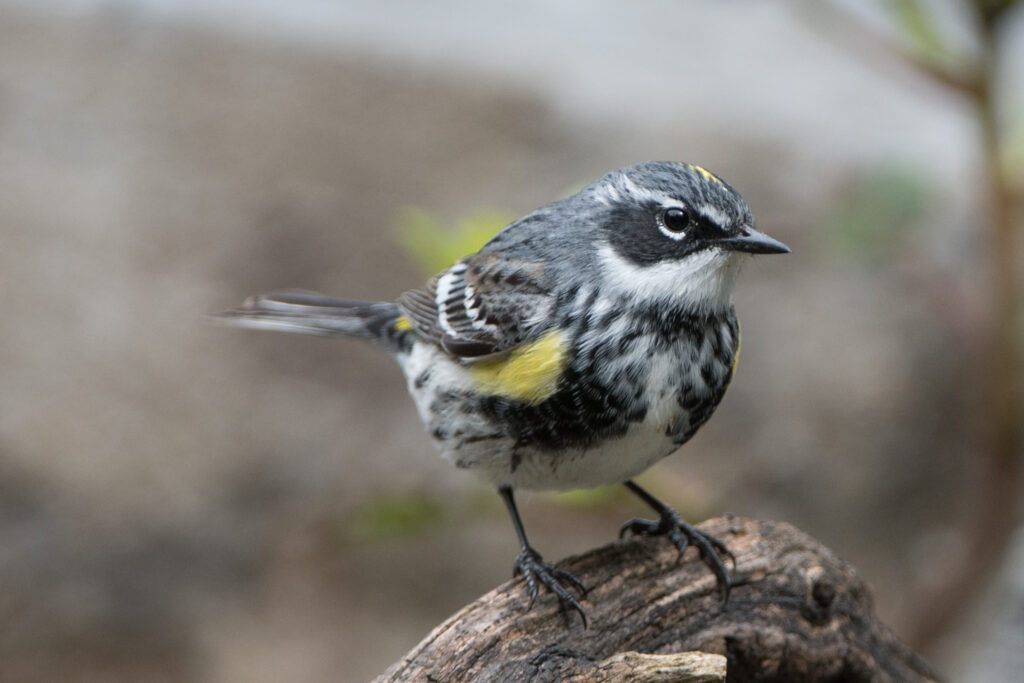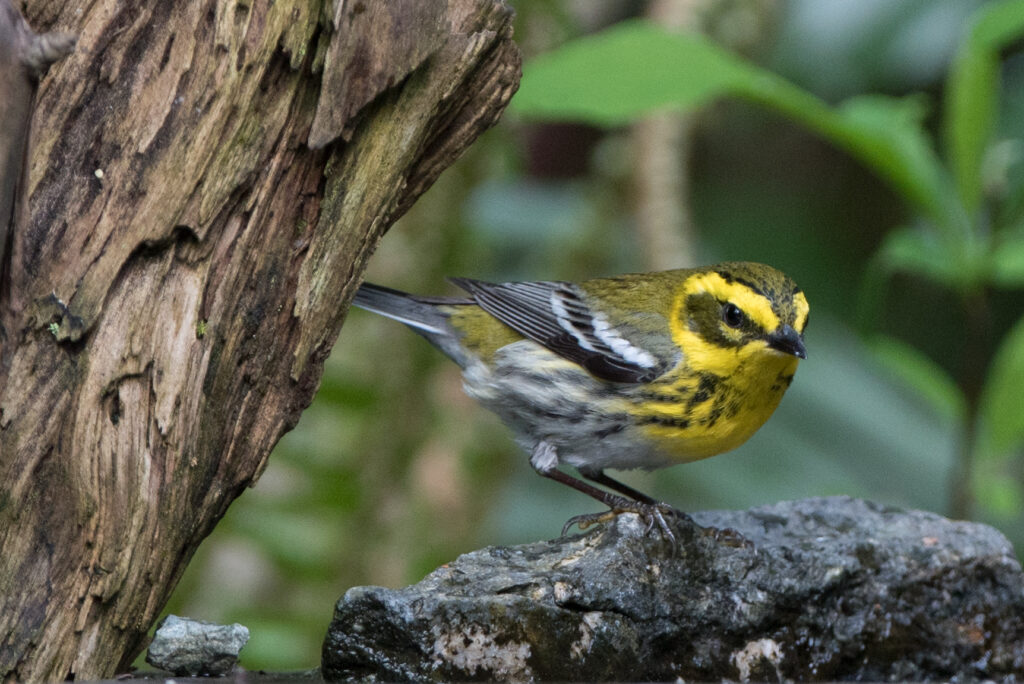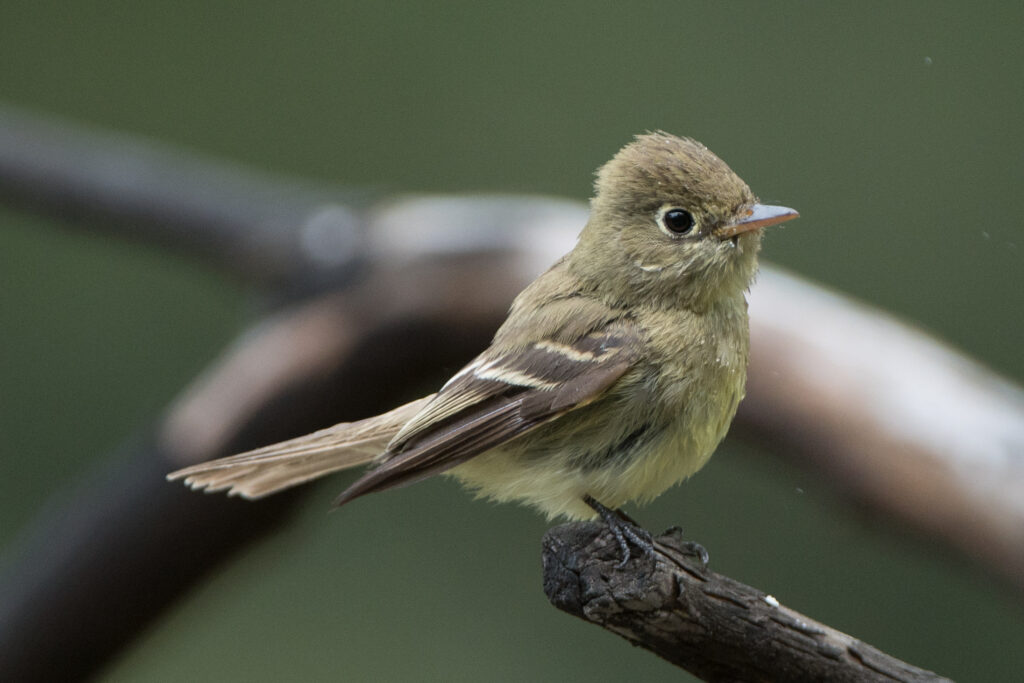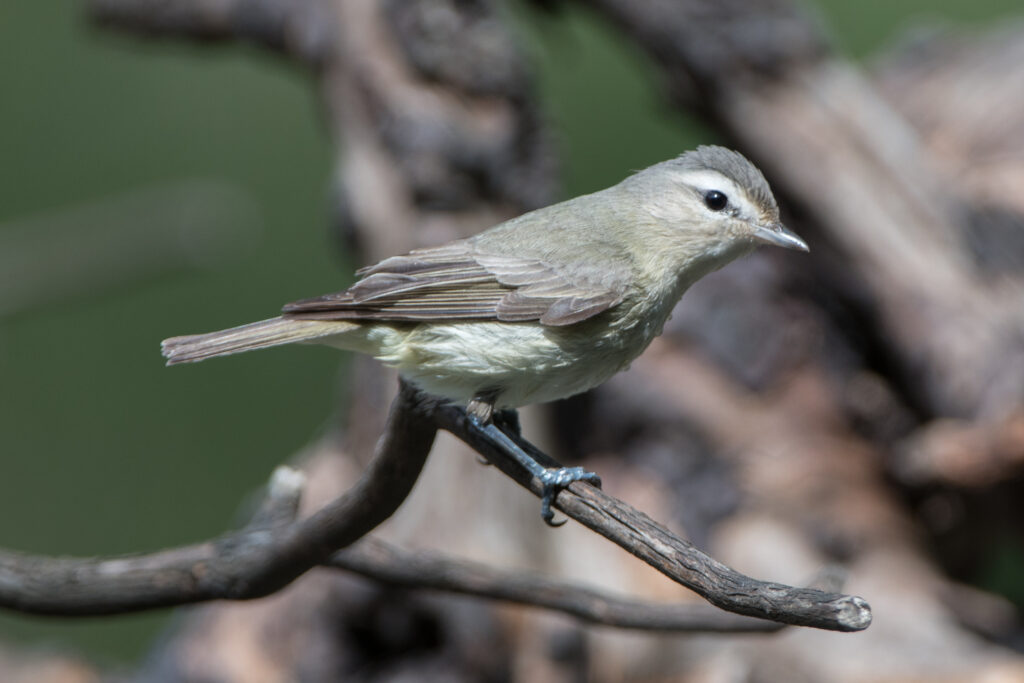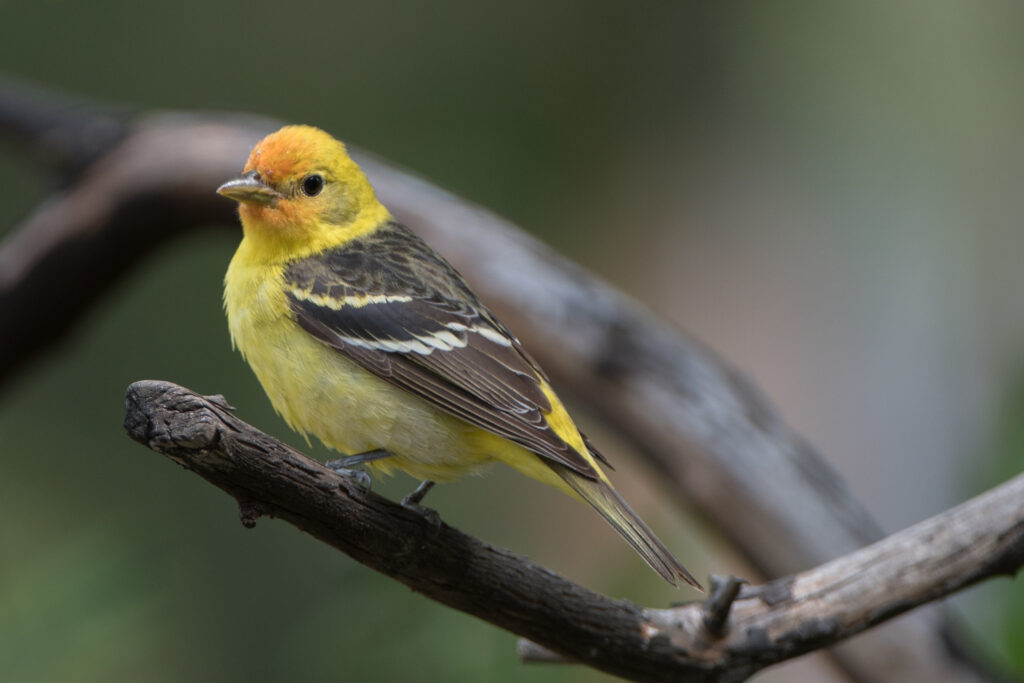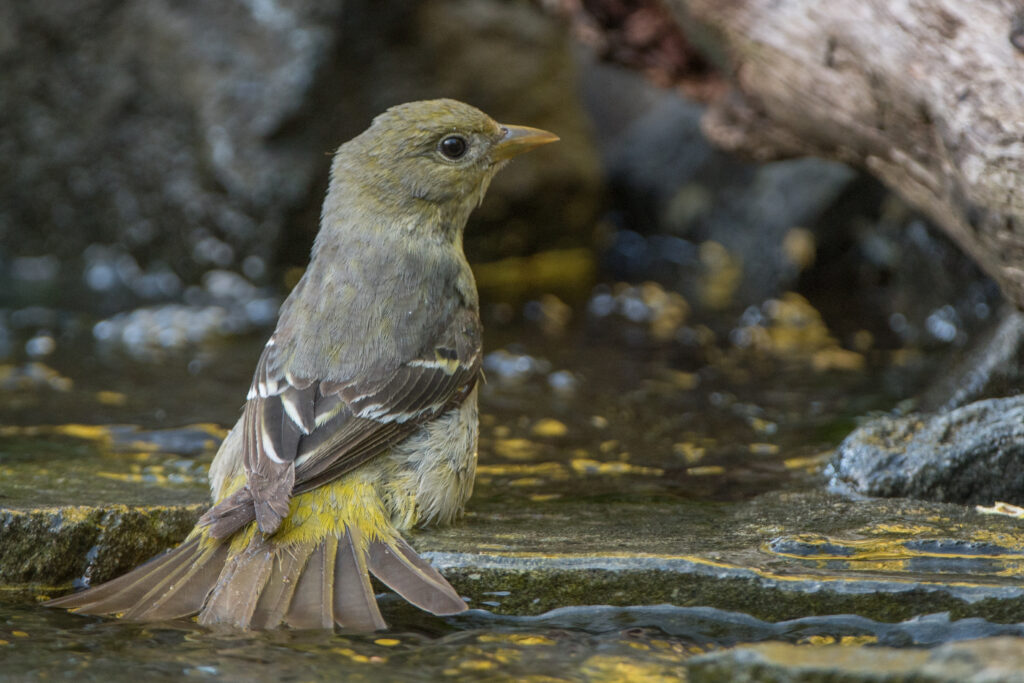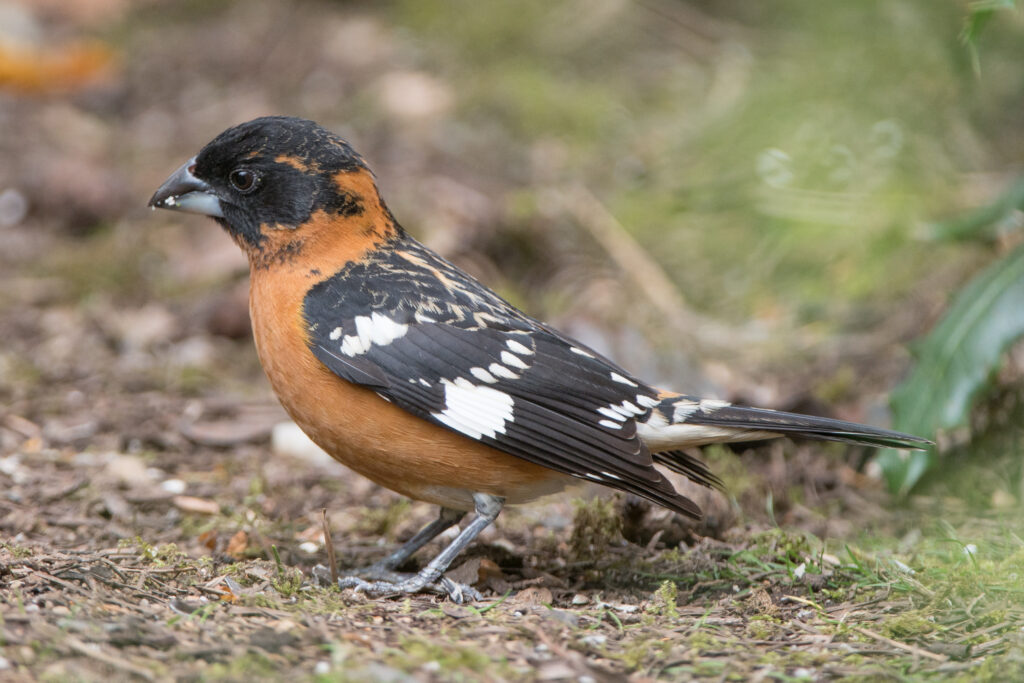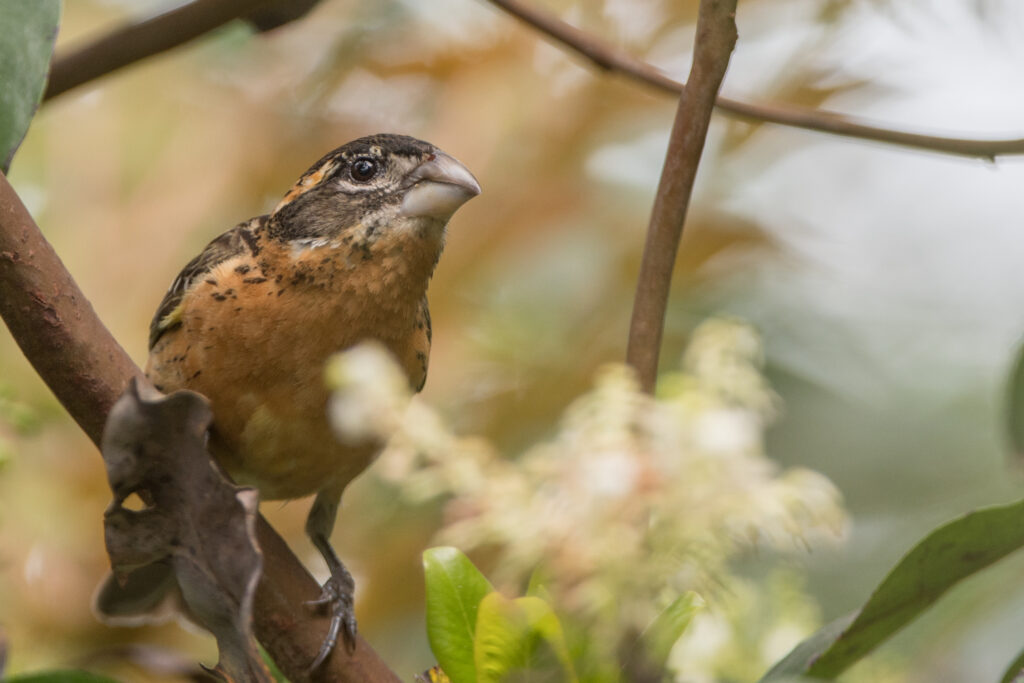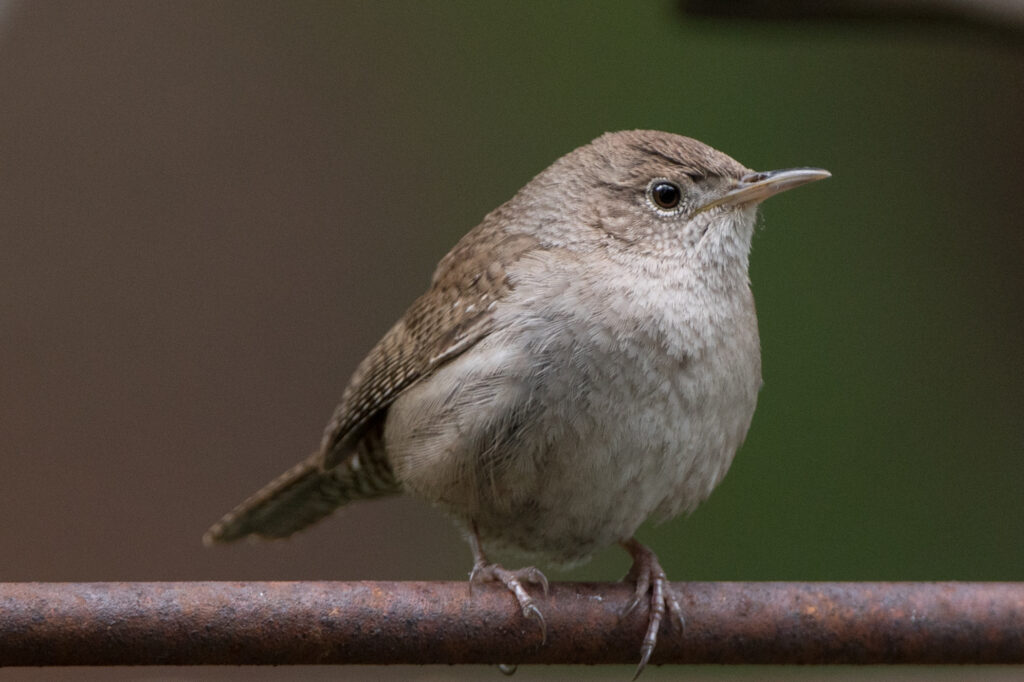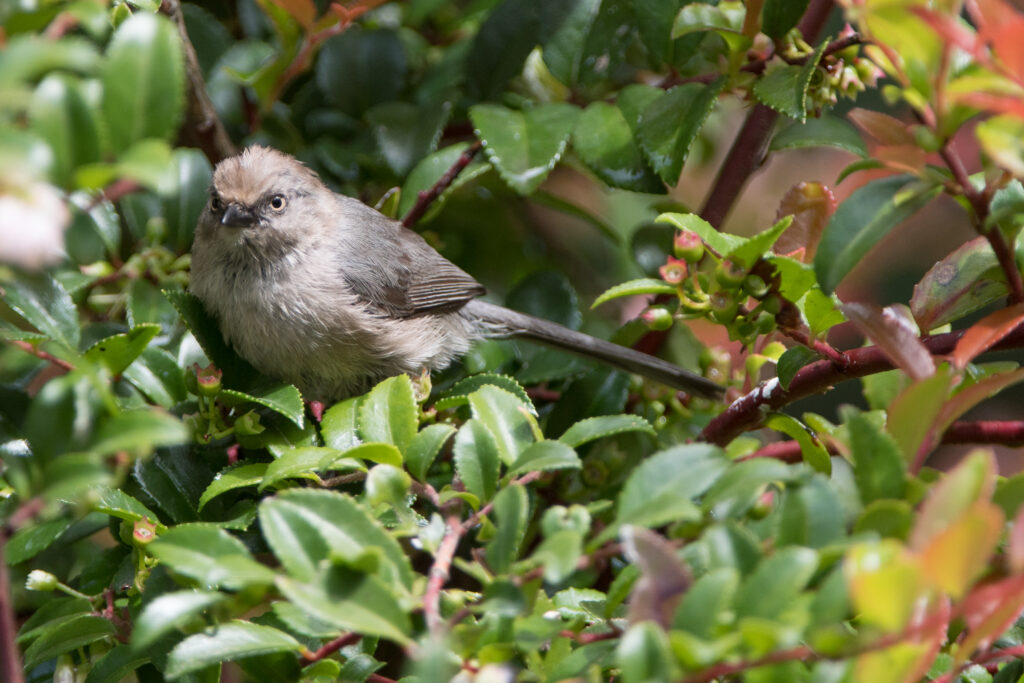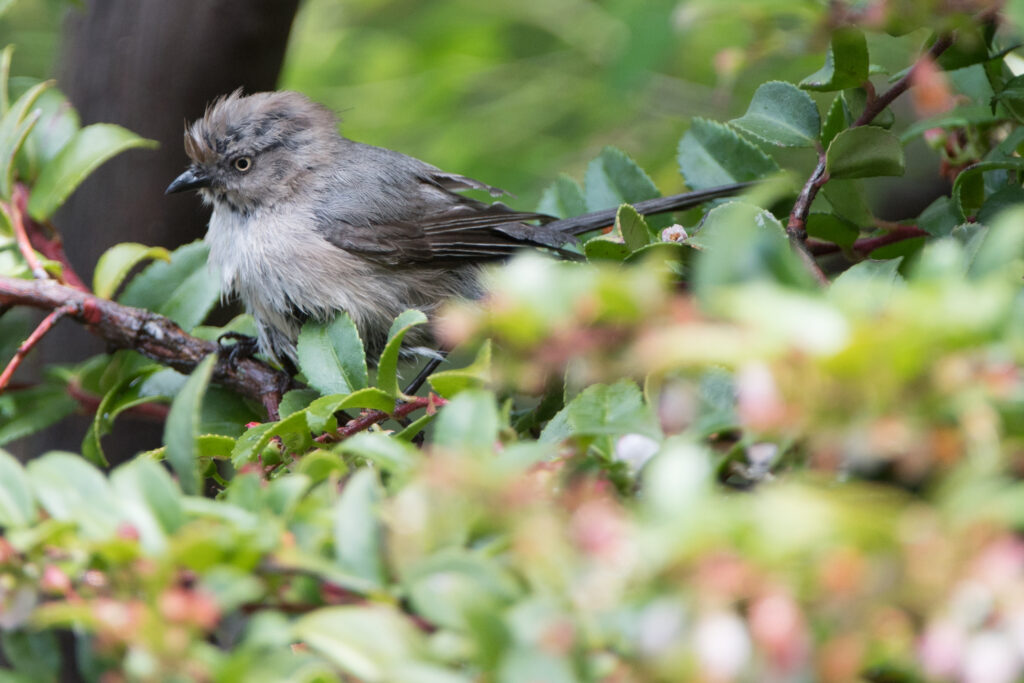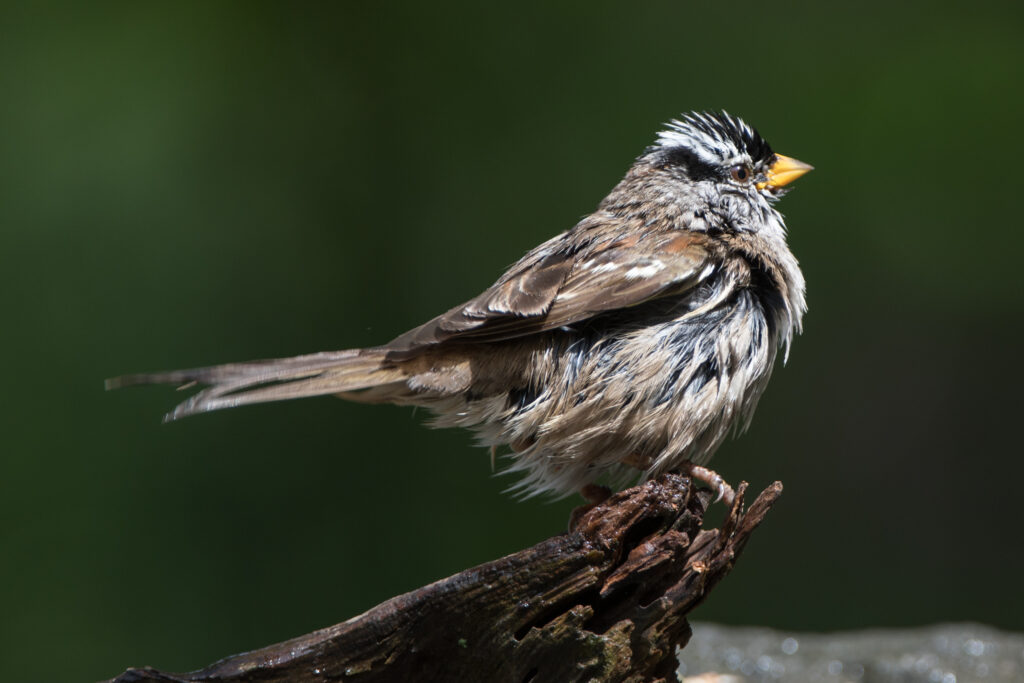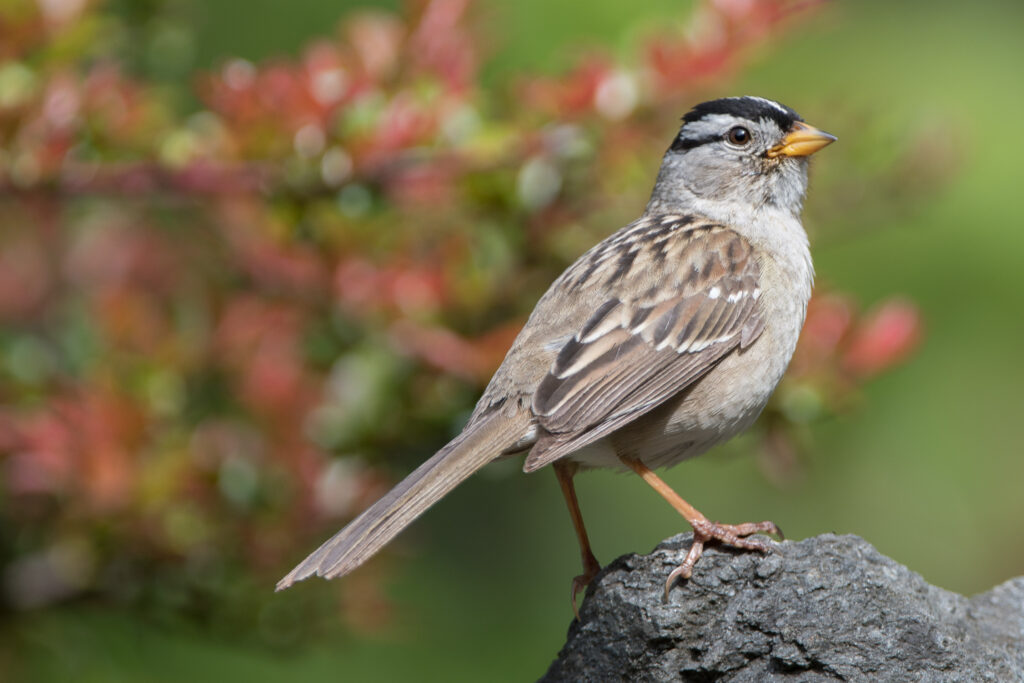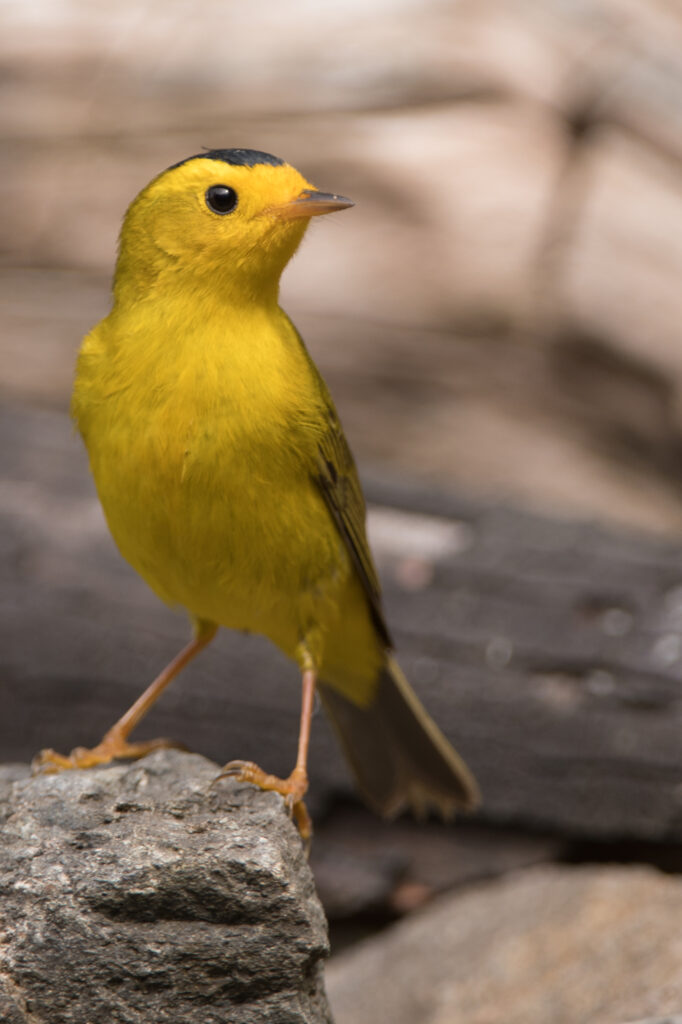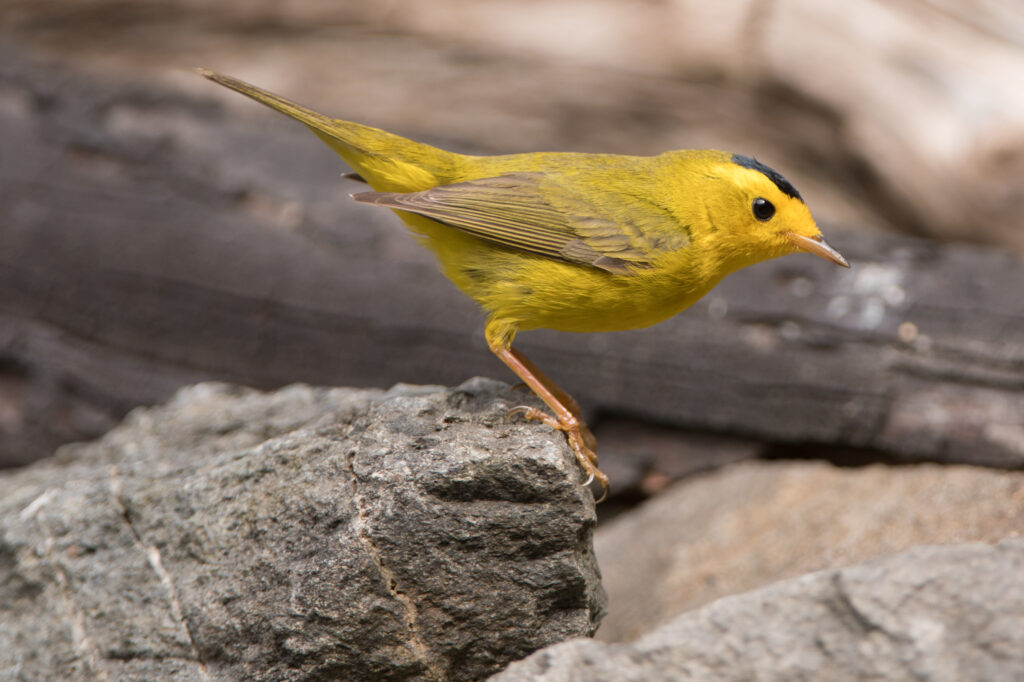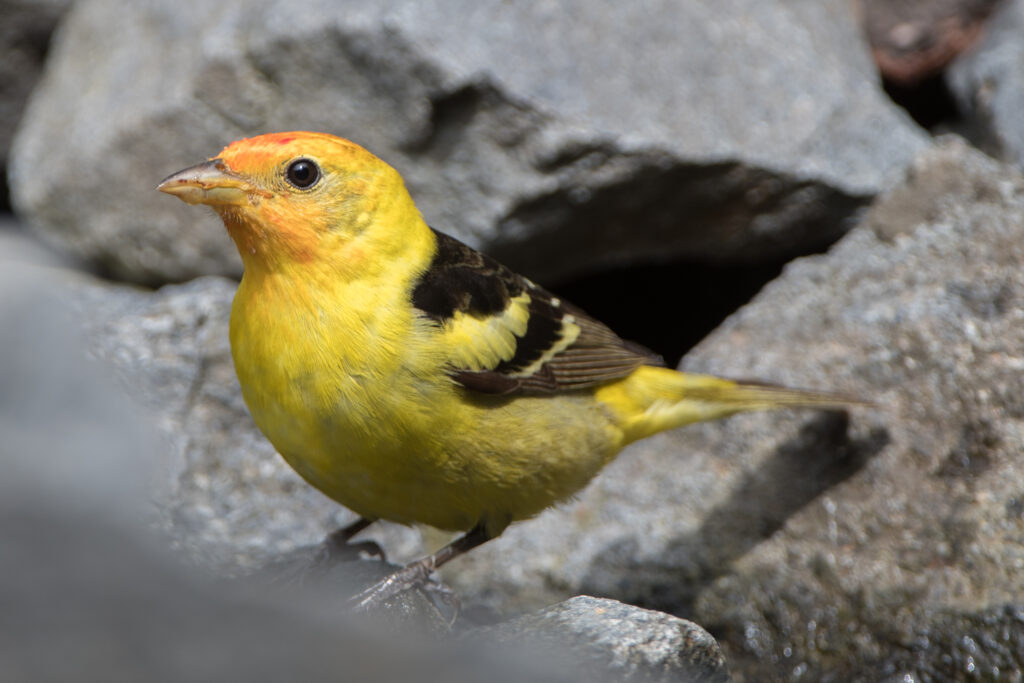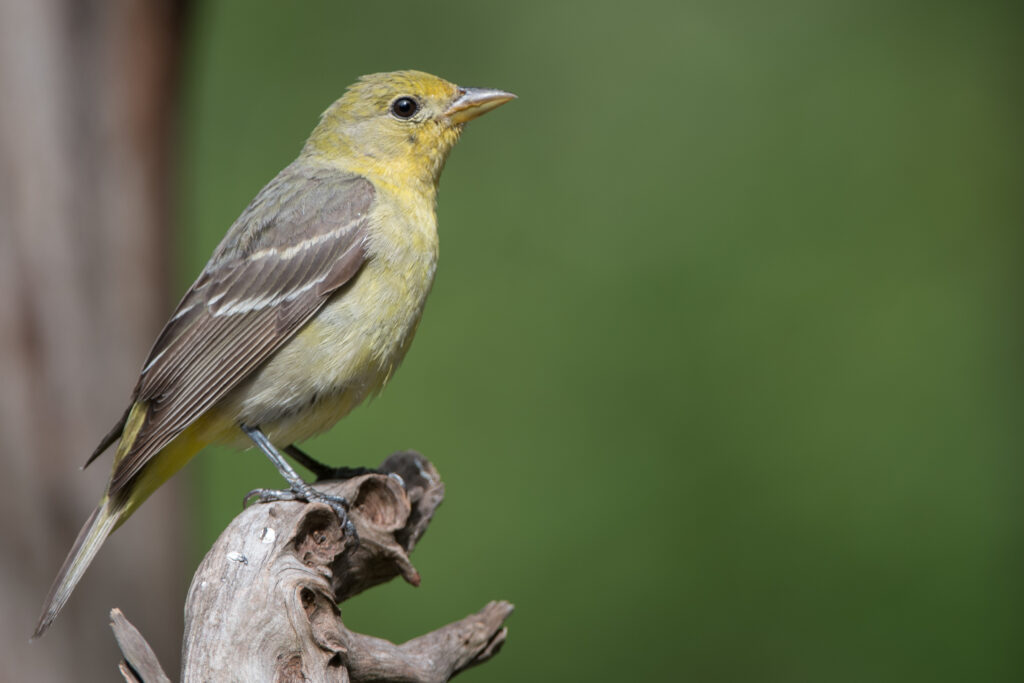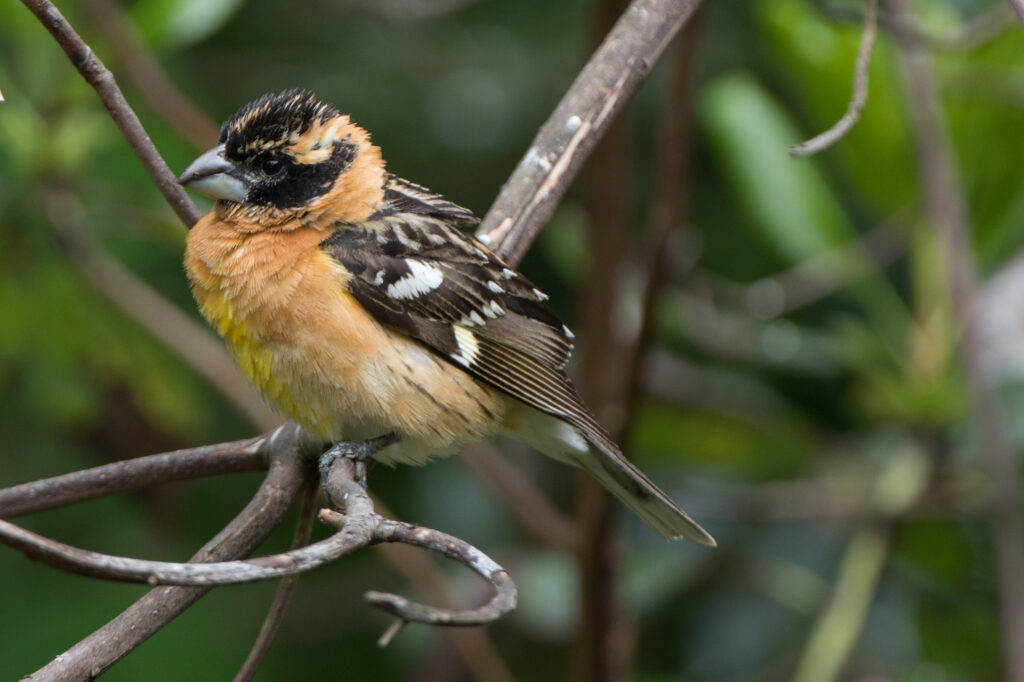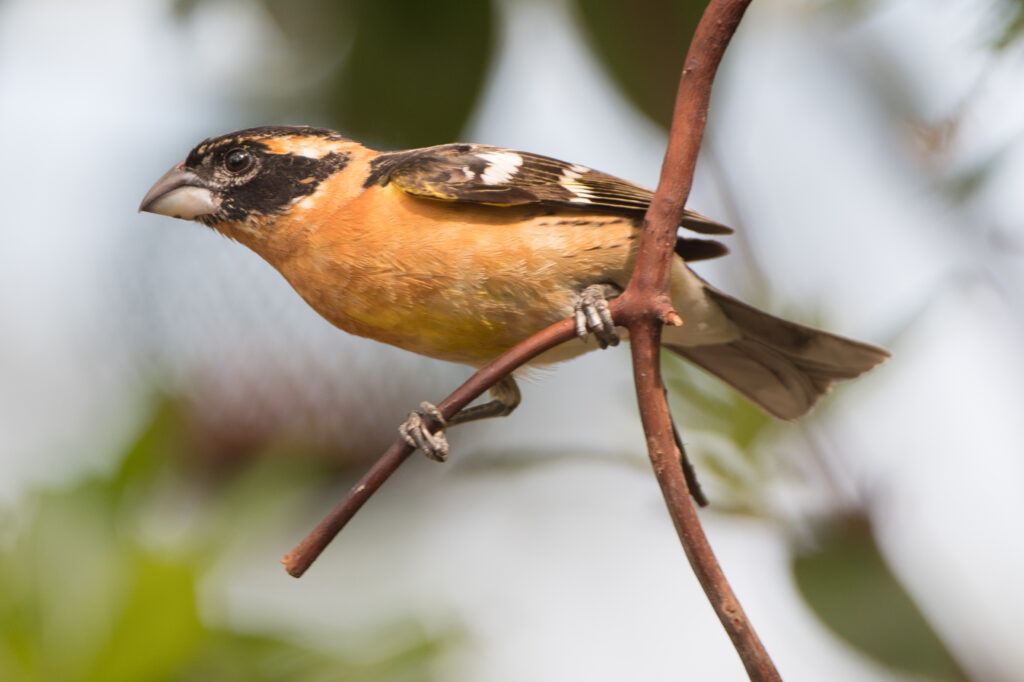The afternoon of June 5, 2020, began rather slowly. I photographed a juvenile Brown-headed cowbird coming to the watercourse. I haven’t observed any foster parents so I don’t know who raised this bird.
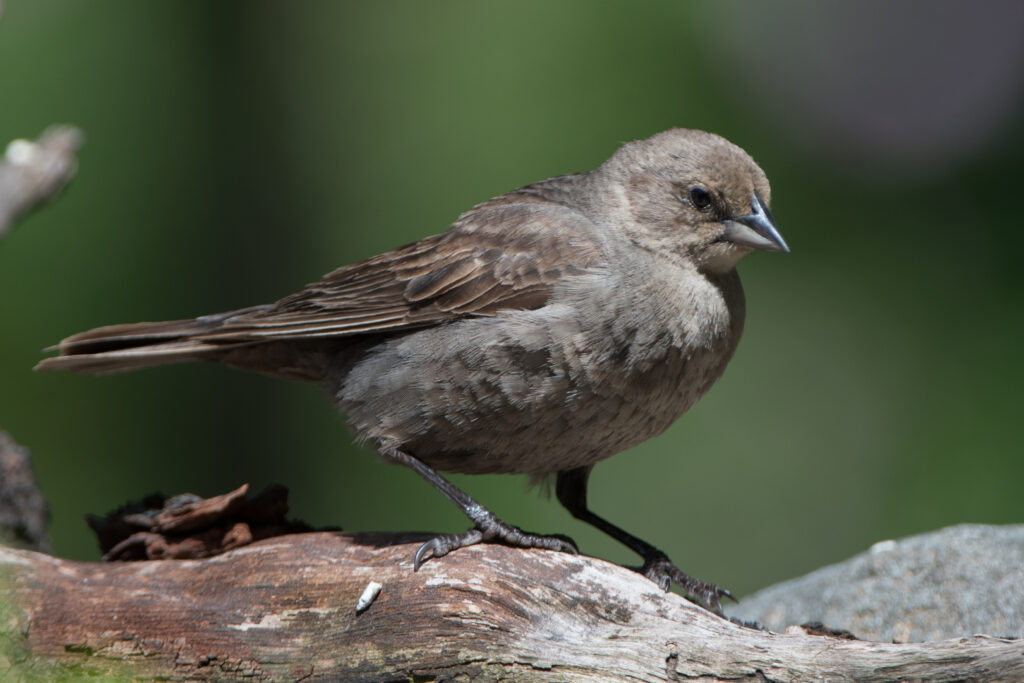
About 4pm I was sitting in the yard becoming rather bored with what I was seeing. A pair of Eurasian Collared doves kept coming and going, flying down to the ground and then back up into the trees. Suddenly an accipiter launched an attack from the trees and barely missed getting one of the doves, which flew from the yard. I couldn’t see the accipiter but was aware that it had remained in our Golden Chain tree (which is no longer blooming). I carefully positioned my hands on the camera so that I would need a minimum of movement to adjust the camera if the accipiter reappeared.
After about three minutes the accipiter flew to staging sticks over our constructed brush pile (in our front yard). I was about 35-40’ away but was lined up perfectly so that no movement, other than my shutter finger, was necessary to take photos. I took several photos as the accipiter peered into the brush pile for prey. I was disappointed that I couldn’t see the lower portion of the bird’s legs where it might have been banded.
After a couple of minutes on the brush pile the accipiter flew from the yard. It’s been an infrequent visitor to the yard for the past three weeks or so. The infrequency of its visits is somewhat surprising considering the number of birds in the yard.
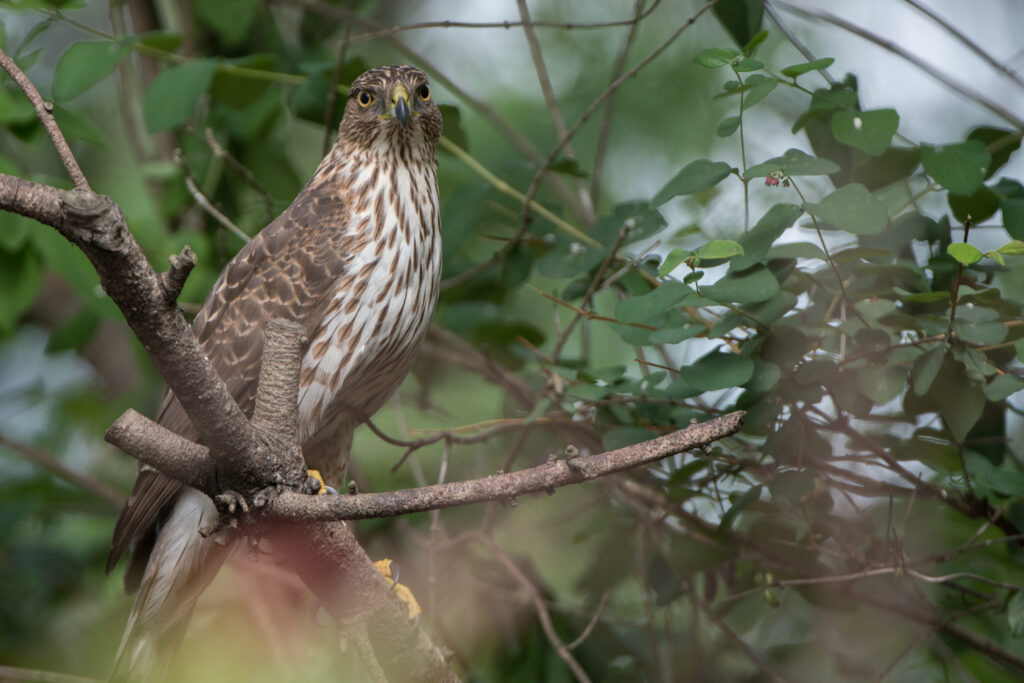
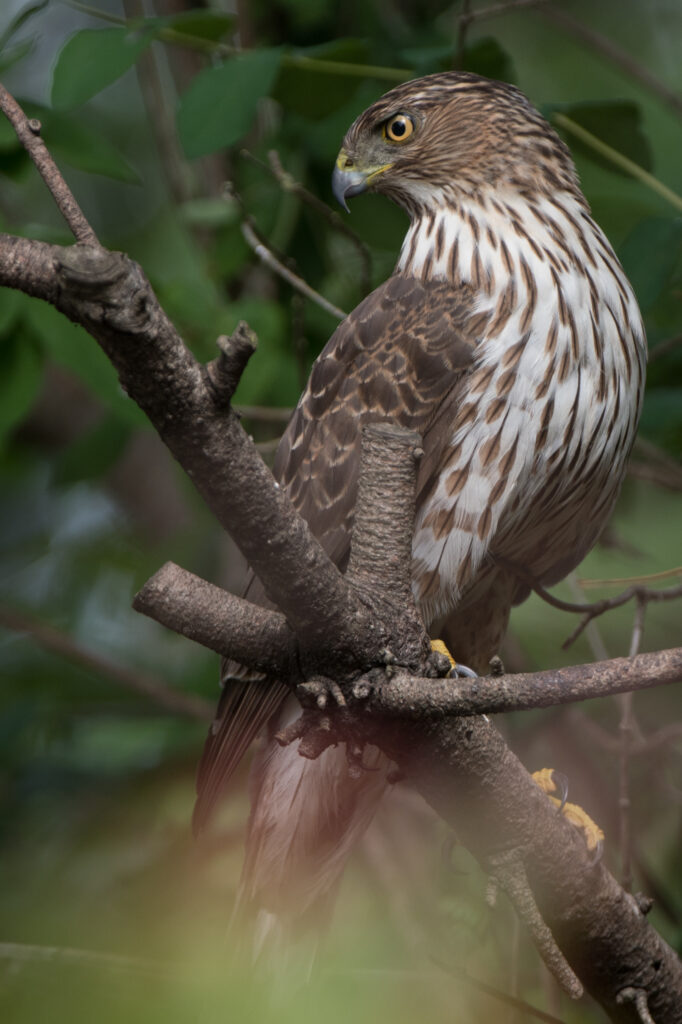
A while later we had a Bewick’s wren take a bath in our stone bird bath, which is another unusual event. We’ve had at least one Bewick’s wren around the yard all spring, but this is the first time I can remember seeing one bathing.
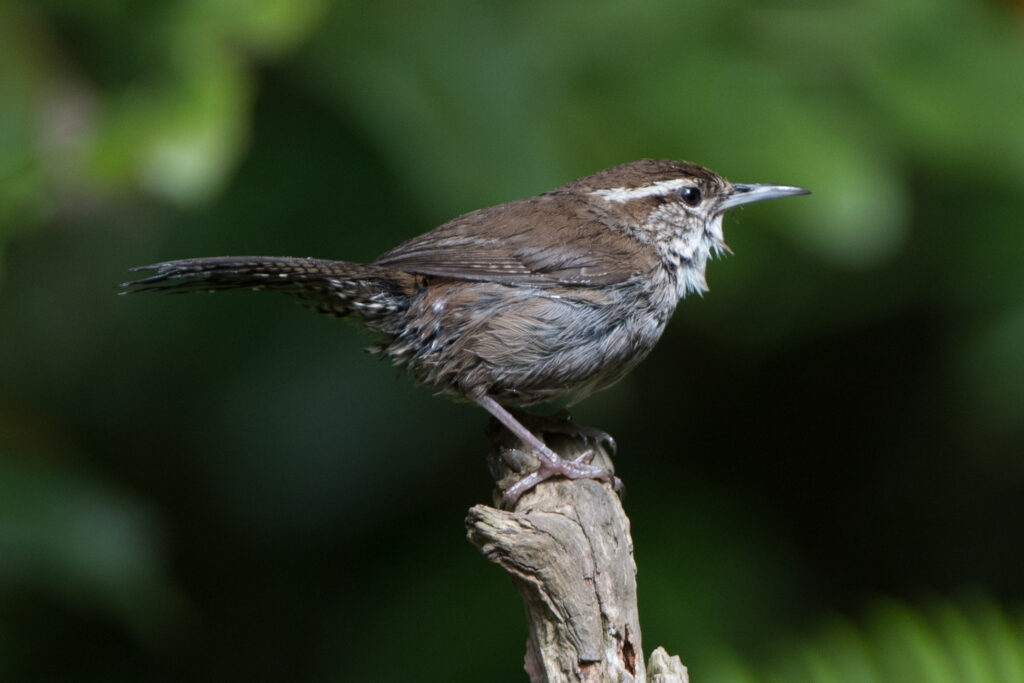
My slow afternoon was picking up! A Brown creeper flew into the yard, choosing to bathe in the watercourse instead of its favorite, and more distant, stone bird bath. This gave me good opportunity for photos and at a closer distance than usual.
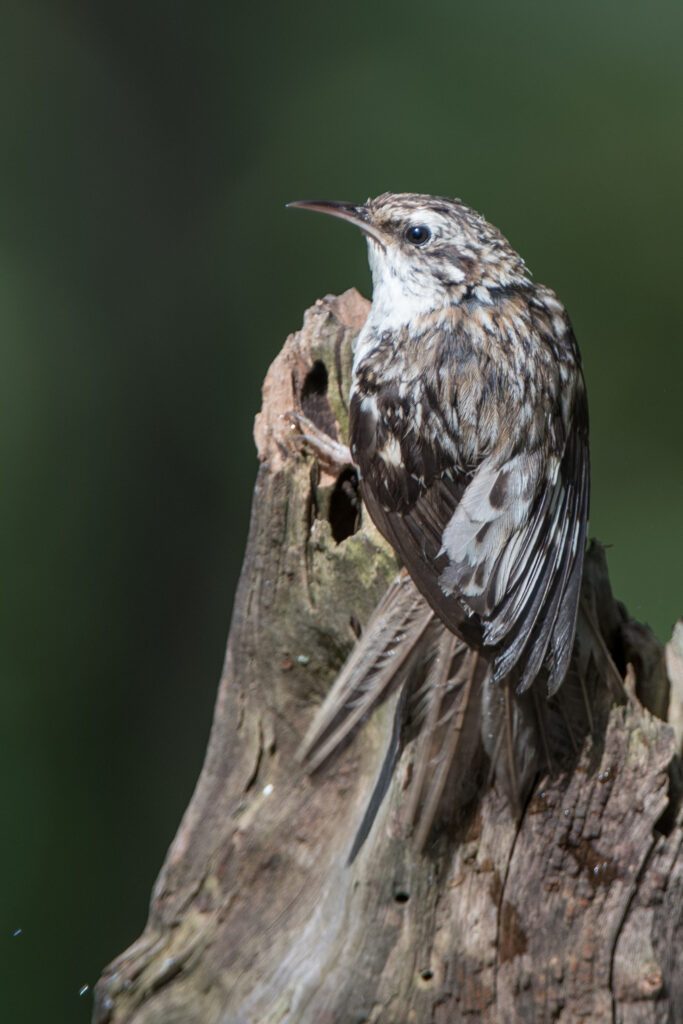
Before my afternoon observations ended I had visits from both male and female Black-headed grosbeaks, but unfortunately they didn’t pose for photos.

